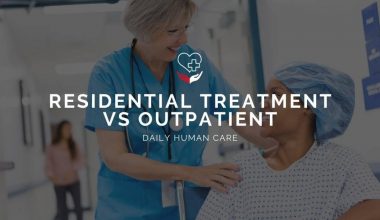Here is another interesting article for you by Daily Human Care, let’s start!
Table of Contents
The Importance of Individual PPO Dental Plans for Your Oral Health
Preferred provider organization (PPO) plans have a network of dentists that the insurer contracts with for an agreed-upon fee. Enrollees can go outside the network but will pay higher costs.

Most individual DPPO plans offer 100/70/50 coverage, with preventive care like checkups and cleanings covered at 100%, basic procedures like fillings at 70%, and significant procedures at 50%.
Preventive Care
You wouldn’t drive a car without auto insurance or own your home without home insurance, so why neglect your oral health? Regular preventive care can detect problems early to treat them before they become more expensive or complicated to repair.
The individual PPO dental plans offer large networks of dentists. This allows plan enrollees to choose their preferred provider and receive coverage for services at a reduced rate. They do not require a referral from a primary care provider or have annual deductibles.
Routine Cleanings
Dental cleanings are one of the most essential preventive procedures covered by dental insurance. They help keep gum disease and tooth decay at a minimum and remove the hardened plaque and tartar that can cause these problems.
Regular teeth cleanings can also help to keep bad breath at bay by removing the bacteria that can lead to halitosis. They can also help reduce the risk of infection transmission, which can spread from the gums or teeth into other body parts.
If left untreated, these issues can cost you thousands of dollars in the long run. But with routine care and regular cleanings, you can avoid these costly procedures.
X-Rays
X-rays (or radiographs) give dentists an in-depth view of your teeth and surrounding tissue. When combined with a physical examination, dentists can spot potential problems such as tooth decay, gum disease,, or abscesses at their earliest stages.
Eighty percent of cavities occur between teeth, which can’t be seen during a visual exam. X-rays help your dentist find these cavities, monitor the position of unerupted or impacted teeth,, and detect cysts or tumors.
While X-rays involve radiation, technological advances have significantly reduced the exposure you’ll experience. Your dentist will recommend a schedule for X-rays that is appropriate for your age and oral health history.
Crowns
A dental crown is a tooth-shaped cap that supports a damaged or decayed tooth. They are often necessary after a root canal to protect the infected dental pulp.
Preferred provider organization (PPO) plans often have more extensive networks and give plan enrollees flexibility with dentist choice compared to a dental HMO. This allows for more savings for members who choose to go with an in-network dentist.
Fillings
When choosing a dental plan, it is essential to understand the different types. PPO and HMO plans are two options to consider. Both have unique features that make them better or worse than other types of dental insurance.
Dental HMOs are cheaper but restrict members from seeing dentists within the plan network. In contrast, dental PPOs have a higher annual maximum but offer more flexibility with a choice of providers. They also usually have a deductible, while HMOs do not.
Root Canals
Root canal treatment is the best way to save a tooth when its pulp becomes inflamed or infected. It is often more cost-effective than replacing the tooth with dental prosthetics like a bridge, implant, or denture.
Before your dentist starts the procedure, they will put a numbing agent on the affected area. They will then drill an access hole in the tooth and remove the inflamed or infected pulp. The tooth will then be disinfected, cleaned, and shaped with a rubbery material called gutta percha before being sealed with a dental filling.
Orthodontics
Orthodontics is more than just a cosmetic treatment; it’s also essential to overall dental health, improving oral hygiene and confidence. Whether it’s through braces or clear aligners, orthodontics helps patients better maintain their teeth by correcting misalignments and bite problems.
Dental PPO plans offer more flexibility, extensive provider networks, and partial to full coverage. However, they typically require a deductible and have an annual maximum on the amount they’ll cover. These plans can be purchased directly from an insurance provider or through your employer.
Implants
Dental implants are a high-tech replacement for missing teeth that look, act, and feel like natural teeth. They can last a lifetime with proper care.
Individual and group insurance plans that cover a variety of dental procedures are available. They include dental health maintenance organizations (HMOs), dental preferred provider organizations (PPOs), and dental indemnity plans.
HMOs typically have lower monthly premiums but only cover care from in-network dentists and healthcare providers. DPPOs require coinsurance and have annual coverage maximums, but they offer greater flexibility to use out-of-network providers.
Extractions
Tooth extractions may sound intimidating, but essential in maintaining oral health. While dentists always strive to preserve natural teeth, sometimes that’s impossible.
A dental extraction involves the removal of a tooth from its socket in the bone. Dentists typically use local anesthesia to numb the area before using elevators to loosen the tooth and force it out. Patients with renal disease and those taking blood-thinning medications should avoid tooth extractions, as these conditions increase the risk of bleeding.
Invisalign
Having dental insurance has been shown to improve self-reported oral health (SROH). The right plan depends on the individual’s needs. Individual policies are more expensive than group coverage through employers or the Affordable Care Act marketplace. Still, they often offer more flexibility to choose in-network dentists and avoid balance billing.
Dental Preferred Provider Organization (PPO) and dental Health Maintenance Organization (HMO) plans usually cost less than indemnity plans but limit the choice of dentists and providers to those within their network. The lower monthly premium may be worth it for some individuals.



